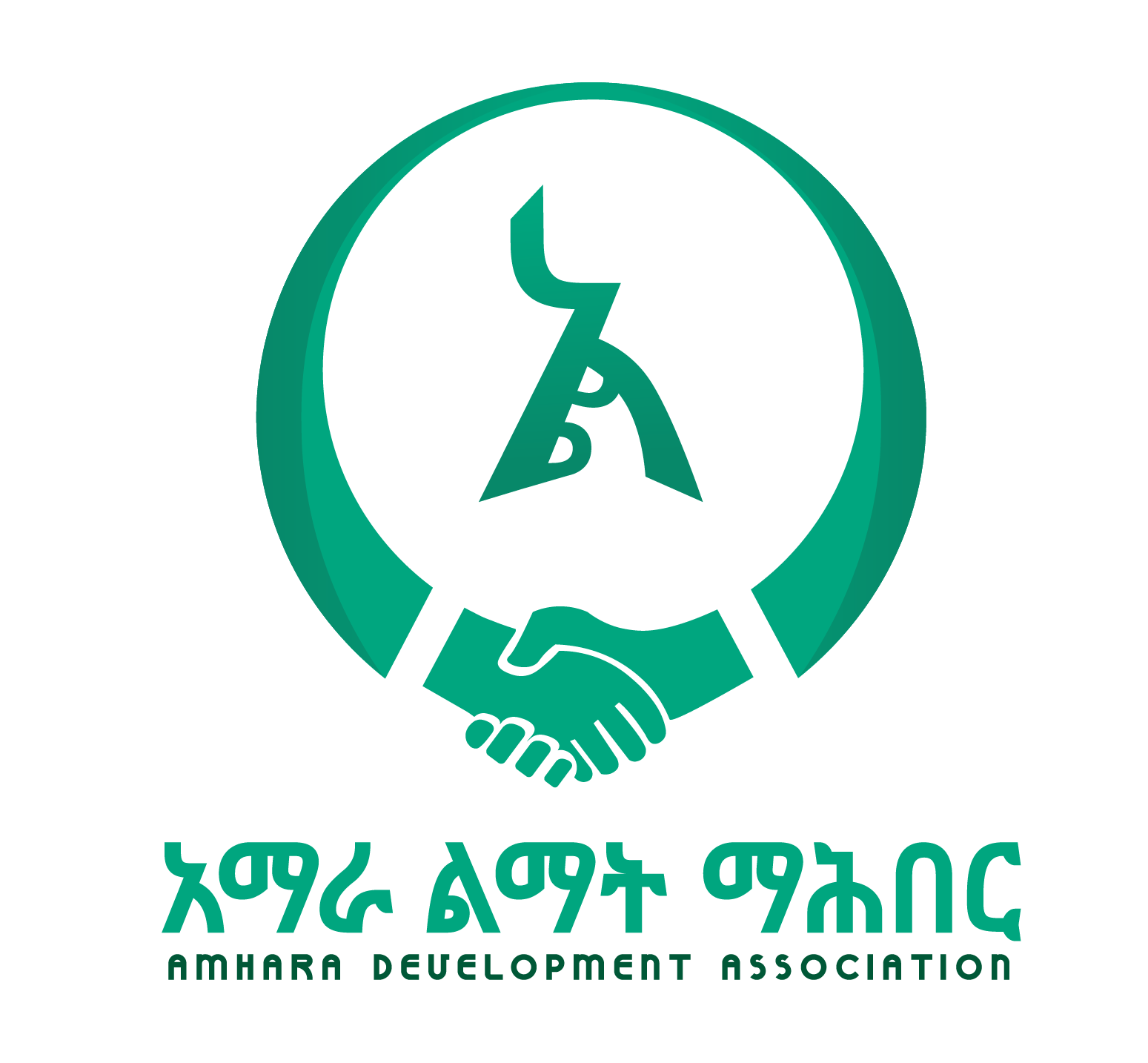
Amhara Development Association
The Amhara National Regional State (ANRS), with an estimated population of 17.7 million (as of 2002), encompasses Wag Himra, North Wollo, North Gondar, South Gondar, South Wollo, North Shewa, Oromia, East Gojjam, West Gojjam, Awi and Bahir Dar special zone. It covers total area of 161,828.4 square kilometers. This is about 11 percent of Ethiopia's total area. The Amhara region is located 9°-14° N and 36°-40°E in Ethiopia's Northwest. The region is divided into three major agricultural climatic zones: highland (above 2,300 meters above sea level), semi-highland (1,500 to 2,300 meters above sea level) and lowland (below 1,500 meters above sea level) accounting 20%, 44% and 28% respectively. This varied ecology lends itself well to diversified agriculture
Establishiment
Amhara Development Association (ADA) is an indigenous not-for-profit organization established in May 1992. ADA emerged as a local Non-Governmental Organization to contribute the socio-economic progress of the people of the Amhara National Regional State and to the nation. Its head office is located at Bahir Dar, the capital city of the Amhara Region. ADA has established its branch offices in the 11 major zones of the Amhara Region and in other regions of the Federal Democratic Republic of Ethiopia. In each woreda of the Region, (woreda is a local language equivalent to District) it has a committee of seven volunteers who undertake membership and related development activities of the association in their respective Woredas. It also has overseas offices in countries of Africa, Europe, America, Middle East and Asia. Legal Status ADA is re-registered at the Federal Ethiopia Charities and Societies Agency as Local Organization (registry number 1421) with the mandate to implement development activities in Amhara Region and nationwide. Motto All for One, One for All The supreme organ of the Association is The General Assembly, which is mainly constituted by representatives of individual members from each district. The General Assembly convenes every two and half year and the overall directions, approves policies, long term plans; it also assigns members of the Board of Management. The Chief Executive Officer and Deputy Chief Executive Officers lead the day-to-day management of the Association. There is a senior management committee consisting of seven senior managers. ADA has adapted a hybrid organizational structure of mission oriented programs in the head office and parallel coordination office structures in zone administrative boundaries. The head office is structured into Programs Management, Resources Management, Business Development and Administration, Office Head and Planning, Monitoring and Research, Public Relations& Communication, Membership Development, Project Management, Finance &Logistics, Human Resources Development, Internal Audit, Information Technology, Business Administration, and Technique Directorates. Addis Ababa Office is one of the branches mainly responsible for Resources Mobilization as well as Partners relation. Program Management is responsible for the implementation of projects financed by members’ fee and partners funding. Resources Management section manages human, financial and materials resources. Business development and administration is responsible for studying, establishing and undertaking profitable businesses. The other sections provide respective services as indicated by their name. In addition, ADA has a gender and inclusion unit and legal officer accountable to the CEO. ADA has 11 well-staffed coordination offices in Amhara Region and Addis Ababa that mainly undertake volunteerism development, membership recruitment, resources mobilization and projects implementation. ADA carries out volunteerism and membership based undertakings in 159 woredas of Amhara Region, in 11 sub-cities of Addis Ababa, in Benshangul Gumiz National Region, in Dredawa City Admin and in 18 branches abroad. Currently, ADA has more than 4.5 million registered members who contribute to the development efforts of the association. 80% of members’ financial contributions are retained in the woredas (districts) wherefrom it is generated for exclusive use in the areas of social sector development, while the remaining 20% is transferred to the head office and coordination offices to be used for associated purposes. Currently, ADA has 658 staff members of whom 27% are females and 70% are positioned at branch structures outside Bahir Dar. Professionally, 431 (68%) have degree and above. Regarding to asset ADA has its own office head building at Bahir Dar, Addis Ababa, Dessie, Gondar, and Assosa.
Mission
To support the development endeavors of the people of Amhara Region in the areas of health, education, job creation and other related development activities, through community participation by mobilizing resources from members, supporters, donors and other income generating sources.
Vision
By 2033, ADA envisions seeing the people of Amhara region be self-reliant to their socio economic problems by their own capacity.
Strategic themes
Strategic Goals
Amhara Development Association has the following strategic objectives: There are:
The association follow the following principles to achieve their objective
Brand
Objectives
Values